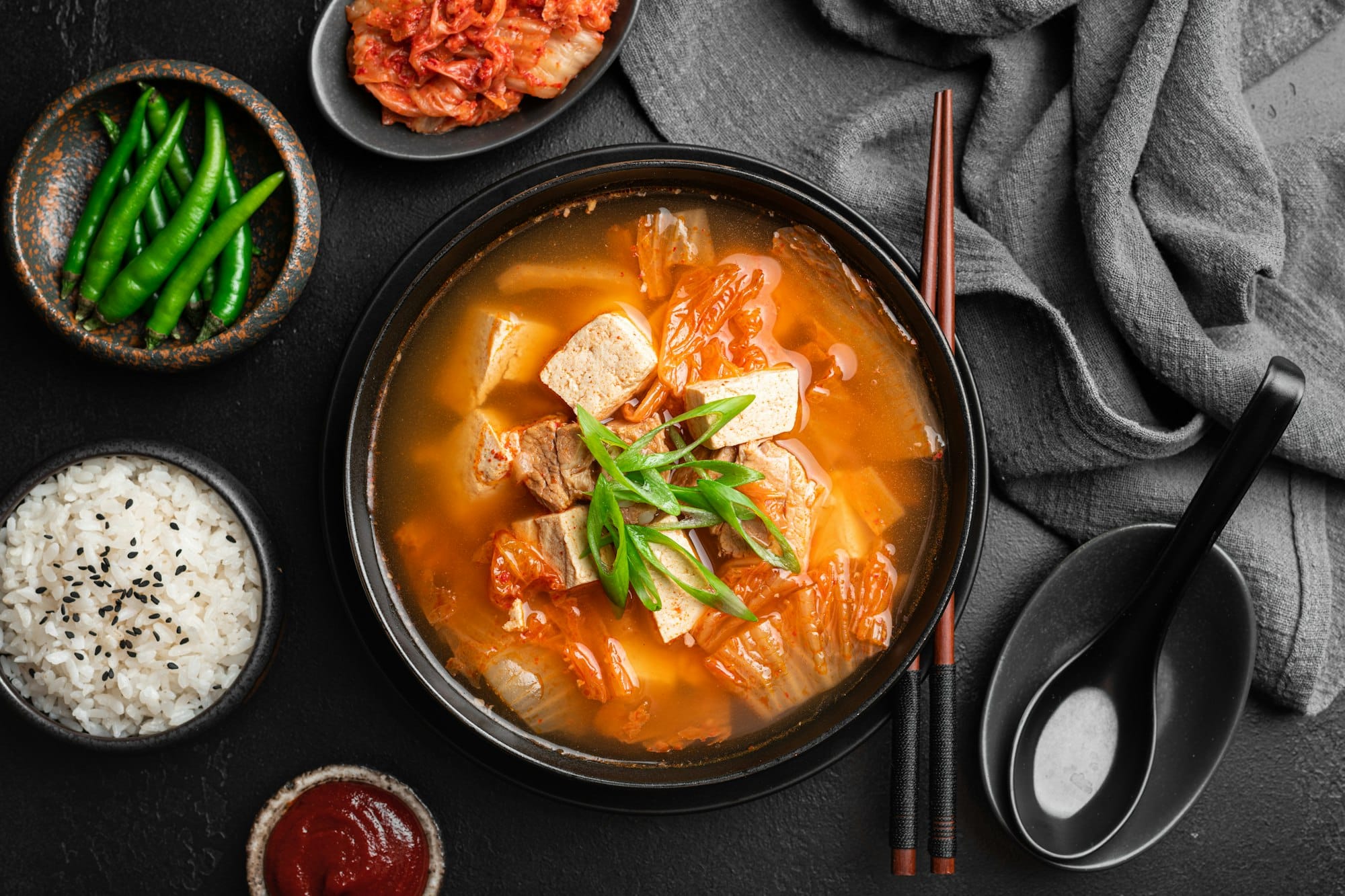Can You Craft a Flavor Explosion with Homemade Kimchi and Traditional Korean Techniques?

Kimchi, a culinary staple in Korea, has been gaining international recognition for its unique flavor and health benefits. But can you recreate that magic in your own kitchen? With proper instructions and a bit of patience, you certainly can. This article aims to guide you on how to prepare homemade kimchi using traditional Korean techniques. We will explore the cultural significance of kimchi, delve into the ingredients used, take a step-by-step look at the fermentation process, and even share a simple recipe for you to try at home.
The Cultural Significance of Kimchi
Before diving into the cooking process, it’s important to understand the cultural significance of kimchi in Korean society. Kimchi isn’t just a side dish; it’s a tradition passed down through generations and a symbol of Korean identity.
Cela peut vous intéresser : The coffee bean guide at maxicoffee
Kimchi is deeply ingrained in Korean culture and history. It is traditionally made during a communal event known as "kimjang", where families and neighbors gather to make large quantities of kimchi to last through the harsh winter months. This practice, recognized by UNESCO as an Intangible Cultural Heritage of Humanity, exemplifies the spirit of sharing and cooperation in Korean communities.
In addition, the consumption of kimchi has been associated with numerous health benefits. The fermentation process promotes the growth of beneficial bacteria, known as probiotics, which contribute to a healthy gut. Kimchi is also rich in vitamins A and C, fiber, and antioxidants.
En parallèle : What’s the Technique for a Silky-Smooth Chicken Liver Pâté with Brandy?
The Essential Ingredients of Kimchi
Kimchi’s distinctive flavor comes from its unique combination of ingredients. The basic components include napa cabbage (or radish), salt, Korean chili powder (gochugaru), garlic, ginger, fish sauce, and green onions.
The napa cabbage serves as the main ingredient. It is chosen for its crisp texture and ability to absorb the flavor of the spices. The Korean chili powder, or gochugaru, gives kimchi its signature heat and color. The intensity can be adjusted to suit your preference. Garlic and ginger provide a robust flavor base while the fish sauce adds a depth of umami taste. Lastly, green onions are included for an extra hint of freshness.
The Fermentation Process
The make-or-break factor in creating kimchi is the fermentation process. Fermentation allows the different flavors to meld together and intensifies the overall taste.
To begin, the napa cabbage is soaked in a saltwater brine for several hours. This draws out the water content, thus preserving the cabbage and providing a suitable environment for fermentation. After being rinsed and drained, the cabbage is then mixed with a paste made from the other ingredients.
It’s then left to ferment at room temperature. The length of fermentation can vary depending on personal tastes and the specific environmental conditions. It could range from a few days to a few weeks. The longer it ferments, the tangier and more complex the flavor becomes.
A Simple Recipe for Homemade Kimchi
Now that you understand the process, it’s time to try making your own kimchi at home. Here is a simple recipe to get you started:
- Cut one head of napa cabbage into quarters and remove the core. Soak the leaves in a saltwater brine for 2 hours, turning every 30 minutes.
- While the cabbage is soaking, prepare the spice paste. Combine 1 cup of gochugaru, 1/4 cup of fish sauce, 1/4 cup of minced garlic, 2 teaspoons of minced ginger, and 1 teaspoon of sugar in a bowl. Mix well.
- Rinse the cabbage under cold water 3 times and drain for 15 minutes.
- Rub the spice paste into each leaf of the cabbage. Add chopped green onions and mix everything together.
- Pack the kimchi into a clean glass jar, pressing down until the brine rises to cover the vegetables.
- Leave it to ferment at room temperature for 2 to 5 days. Check daily to press down the vegetables under the brine.
- Once it reaches your desired level of fermentation, store in the refrigerator to slow down the process.
Remember, making homemade kimchi is not a precise science, but an art. Feel free to adjust the ingredients and fermentation time to suit your personal taste. With patience and practice, you’ll be able to craft a flavor explosion in your own kitchen.
Kimchi Variations and Pairings
Once you master the basic kimchi recipe, you can experiment with different types of vegetables and spices to create various kimchi varieties. Popular variations include cucumber kimchi, radish kimchi, and green onion kimchi.
As for pairings, kimchi is incredibly versatile. It can be eaten on its own or used as a flavorful addition to a wide variety of dishes. It pairs well with rice, noodles, meat, and even pizza. Its tangy, spicy, and umami flavors make it a wonderful complement to many recipes.
As you can see, crafting a flavor explosion with homemade kimchi using traditional Korean techniques is not only possible, but it’s also a fulfilling process. It allows you to appreciate the rich cultural heritage behind this iconic dish while enjoying its delightful tastes and health benefits. It’s time to roll up your sleeves and start your kimchi making journey.
Tasting and Evaluating Your Homemade Kimchi
After you’ve patiently waited for your kimchi to ferment, it’s finally time to enjoy the fruits of your labor. But how do you know if it’s good? Evaluating the quality of your homemade kimchi involves using your senses of sight, smell, and taste.
Upon opening your jar, you should immediately be hit by a powerful, spicy aroma. Don’t worry, a strong smell is a good sign! It means your kimchi has successfully fermented. The color should be vibrant red, with the individual ingredients still visible; this indicates that your kimchi is fresh and hasn’t overfermented.
As for taste, good kimchi should have a balance of spicy, tangy, and umami flavors. The cabbage should retain a slight crunch, providing a satisfying texture with every bite. The taste can evolve over time, becoming more complex as it ages. If the flavors seem too intense, you might want to let it ferment for a few more days. With each batch, you’ll learn to adjust the fermentation time to your liking.
Preserving and Storing Your Kimchi
Proper storage is key to maintaining the taste and quality of your homemade kimchi. After the initial fermentation period at room temperature, transfer your kimchi to the refrigerator. This slows down the fermentation process, thus preserving the texture and flavor of your kimchi.
Always use a clean utensil when you dig into your jar, as introducing foreign bacteria could spoil your kimchi. Keep the vegetables submerged in the brine to prevent them from drying out or molding. A well-stored batch of kimchi can last several months in the fridge, although it’s likely to be consumed long before that!
Conclusion: The Joy of Making Homemade Kimchi
Making your own kimchi at home using traditional Korean techniques is a rewarding endeavor. It’s a process that requires time, patience, and a bit of trial and error. From sourcing the ingredients, preparing the spice paste, to carefully monitoring the fermentation process, every step offers a sense of fulfillment.
Creating a flavor explosion with homemade kimchi isn’t just about the end product; it’s about appreciating the cultural significance of this quintessential Korean dish, understanding the science of fermentation, and enjoying the satisfaction of creating something delicious from scratch.
So why not take on the challenge? Start your kimchi making journey today and experience the joy of crafting your own flavor explosion. Your taste buds – and your gut health – will thank you for it.
